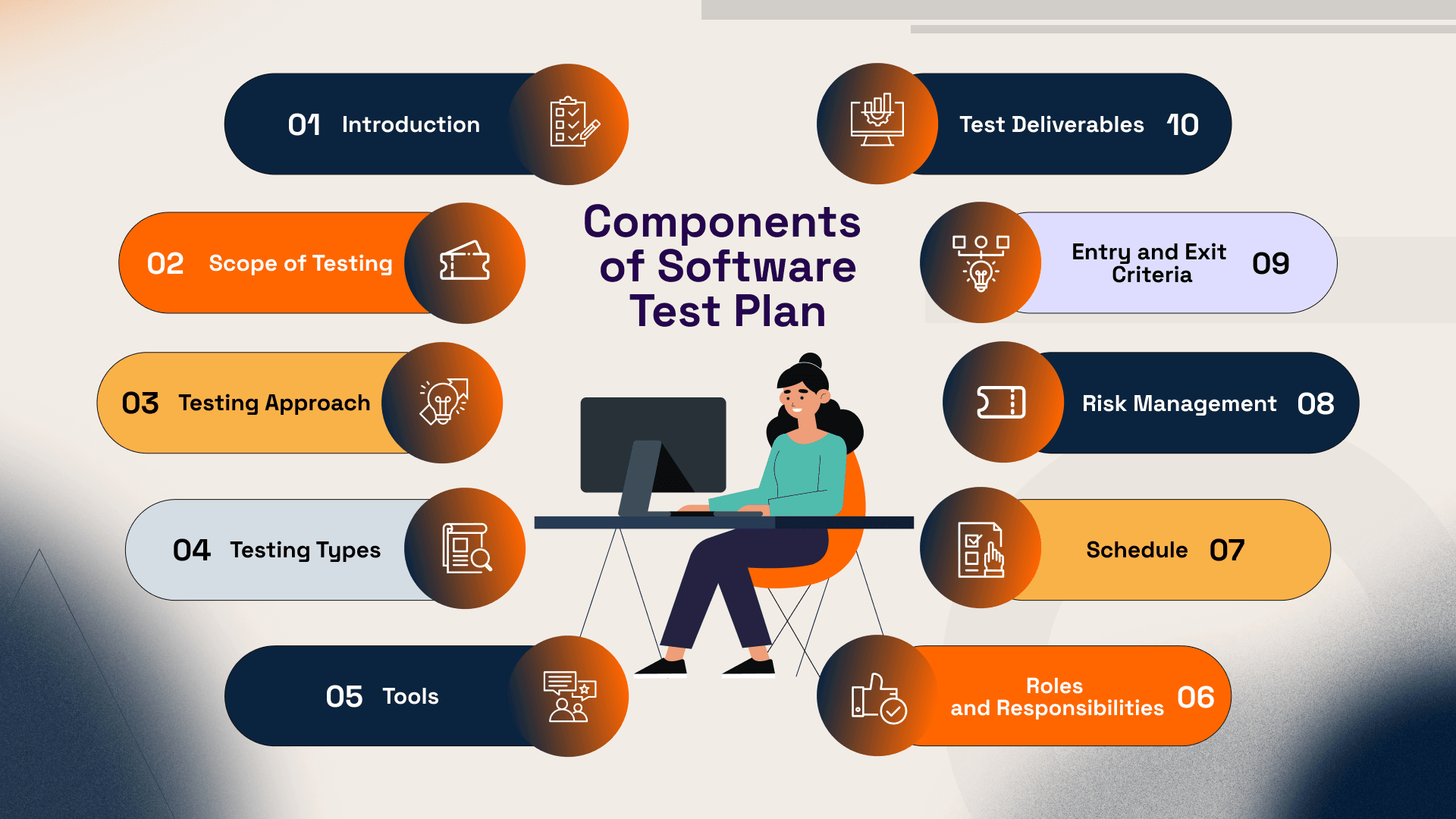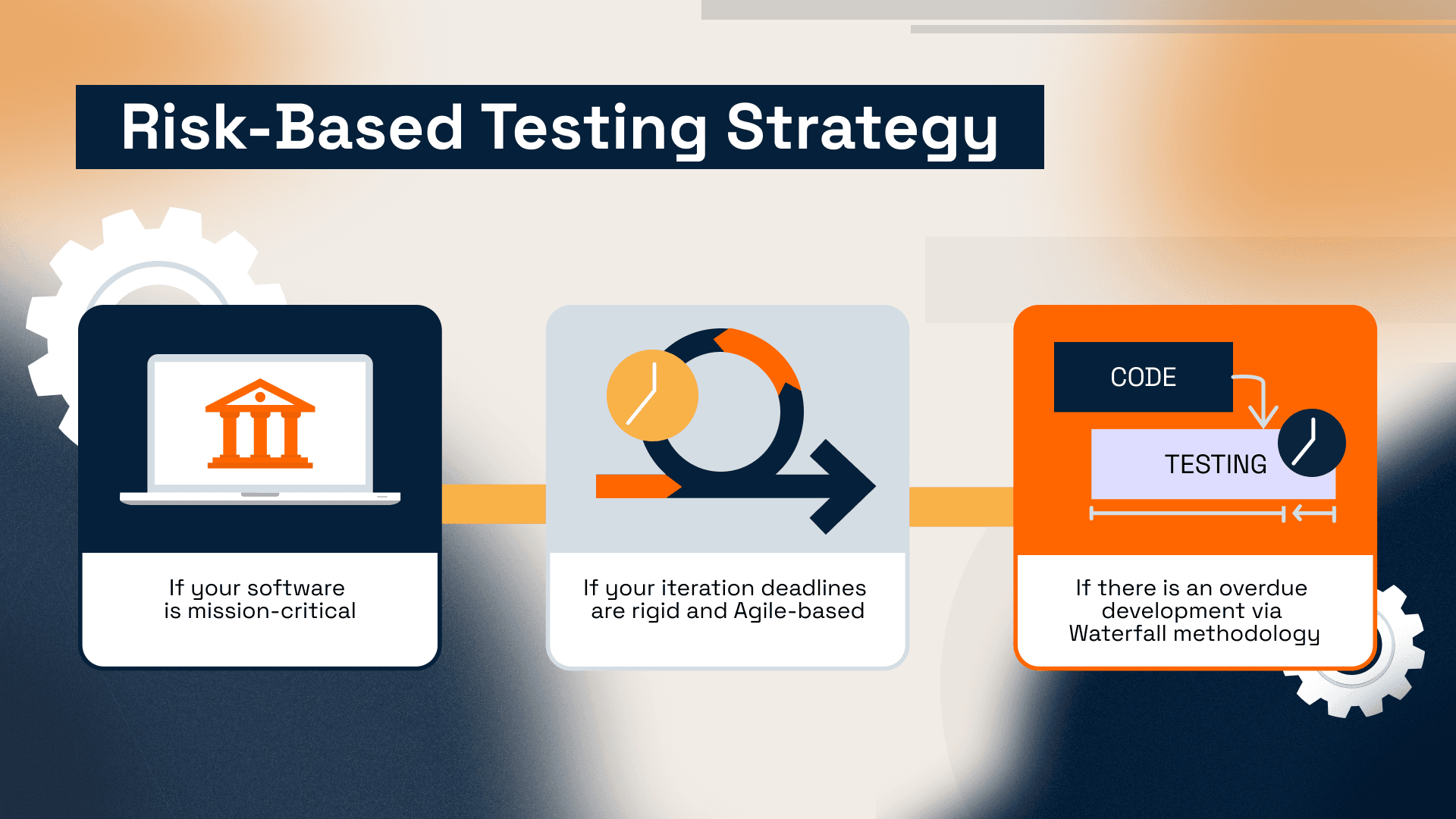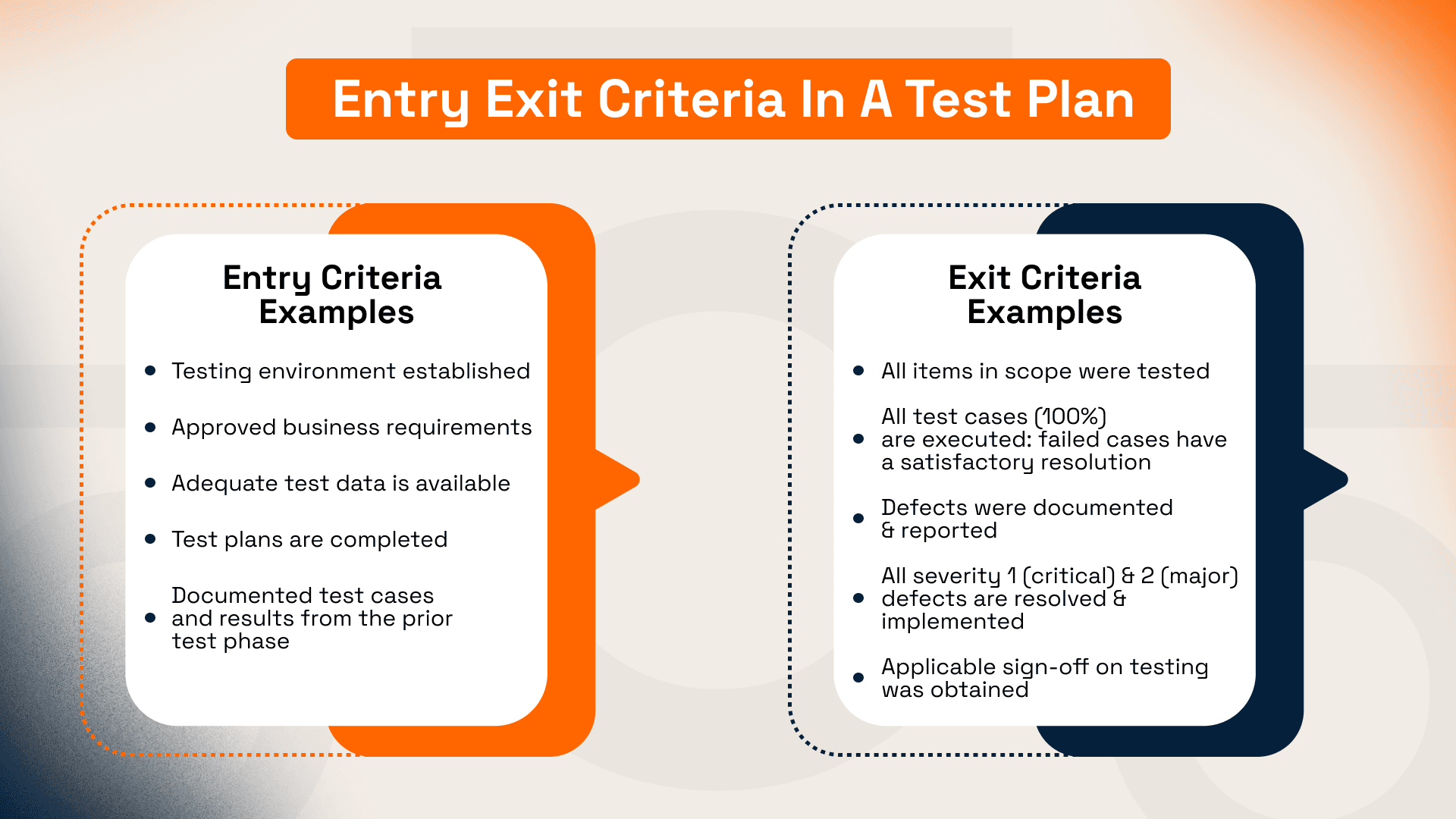
A test plan in software testing is a strategic document that defines how product quality will be verified — including objectives, scope, approach, environment, risks, success criteria, and team responsibilities.
A well-prepared QA plan helps businesses minimize risks, forecast costs, and maintain release stability.
Every product release is a real test for the company. One overlooked scenario, a hidden bug, or misalignment between teams can not only cost the business time but also damage its reputation. The issue often isn’t with the checks themselves — it’s that the assurance process runs without a software testing test plan.
In this article, we’ll explain what a quality assurance document is, what it includes, and how it helps businesses reduce risks and maximize the return on investment in QA.
What is a Test Plan, and Why Does a Business Need it
A test plan is the foundation of any software assurance process. It defines the goals, strategy, and resources required to ensure product reliability, keeping every development stage controlled and predictable.
For a business owner or CEO, a plan is a document that provides confidence that reviews are systematic rather than random. It clearly outlines why the assessment is conducted, who is responsible for it, which standards are used to evaluate results, and how decisions are made about a product’s readiness for release.
To make verification transparent and clear for the entire team, a software test plan must have a well-defined structure. The main components of a test plan include:
-
Objectives — what business problem or risk needs to be addressed;
-
Participants — who will receive and use the results (engineers, developers, managers, clients);
-
Format and standards — the guidelines the project group follows (for example, IEEE 829 or ISO 29119);
-
Document management rules — who approves the guideline and monitors any changes.
 If your company hasn’t yet established a structured process, the first step should be to build the right specialists and define the workflow. Learn how to do that in our article Why a QA team matters (stakeholder buy-in).
If your company hasn’t yet established a structured process, the first step should be to build the right specialists and define the workflow. Learn how to do that in our article Why a QA team matters (stakeholder buy-in).
What is the Scope, and What are the Objectives
A QA test plan defines what needs to be checked, what results the project group expects, and where the verification boundaries lie. It specifies the exact scope of work — from features and scenarios to environments and data. A clear understanding of these parameters helps avoid confusion between technical teams and business stakeholders, especially in projects involving multiple departments.
The document also outlines the objectives, for example:
-
verifying stability under load,
-
confirming that business logic works correctly,
-
ensuring the product meets client requirements.
The “In scope” and “Out of scope” sections define the boundaries of validation — which modules or scenarios are included and which are not. This keeps the focus on what truly matters to users and the business.
Next, the document describes product requirements, assumptions that validation relies on, and dependencies on other systems or data. This section concludes with clear acceptance criteria — specific conditions that confirm the functionality has passed testing and is ready for release.
A well-prepared document helps businesses minimize risks and maintain release stability.
To see how a full cycle of comprehensive software validation works, check out our guide on E2E testing in scope in software development.
What Testing Approach and Coverage Should be Applied
A QA framework defines how the team organizes checks to cover all key areas of the system, its features, processes, and usage scenarios. This helps determine whether the process focuses only on the highest risks or covers the entire functionality.
There are several possible QA approaches:
-
Risk-based testing focuses on the most critical features without which the product cannot operate. It’s suitable when time is limited and the staff need to confirm that core processes remain stable.

-
Full coverage involves assurance at all levels — starting with individual modules, then integration between them, followed by system validation, and finally acceptance review, where the product is evaluated by the client or end user.
The strategy outlines two main types of testing:
-
Functional — verifies whether the business logic works correctly.
-
Non-functional — evaluates performance, security, usability, and system stability.
This ensures that new updates don’t break existing functionality.
The document also defines testing techniques — methods that help design and cover all key scenarios. For instance, boundary value analysis, equivalence partitioning, and decision tables help detect defects even when it’s impossible to review every case manually.
When automation is introduced, the document defines the automation scope — which checks are handled automatically and which remain manual. This ensures resources are used efficiently while maintaining high standards.
Learn more about choosing the right test approach & automation (what it includes) in our detailed article.
What Environment and Data are Used for Testing
A test plan software describes everything needed to ensure that the assurance closely reflects how the product operates in real-world conditions. This involves both the technical environment and the datasets used by the team members. Typically, the document covers:
-
Environment configuration — operating systems, browsers, devices, and network settings;
-
Accounts — sample user accounts with different access levels;
-
Third-party integrations — external services through which data or requests are processed;
-
CI/CD configurations — ensuring automated validation is as close to production as possible;
-
Test data — data sources, anonymization rules, or creation of synthetic data;
-
Feature flags — mechanisms for temporarily enabling or disabling functions;
-
Config management — rules for maintaining environment stability and consistency.
When these parameters are clearly defined, the review process becomes consistent, controlled, and delivers reliable results. Businesses get an accurate picture of product reliability — without unpleasant surprises after release.
Selecting testing tools for your plan helps create a consistent environment where every configuration, integration, and dataset contributes to accurate results and stable releases.
What Entry and Exit Criteria Does a Test Document Include
In test planning in software testing, the team defines under what conditions checks can start and what signifies their completion. This helps avoid unstructured checks and provides a clear understanding of when the product is ready for release.
-
Entry criteria confirm that the system is ready for QA — meaning the code has been developed and passed a basic review, the environment is configured, and all necessary data and scenarios are prepared. This ensures a smooth start to the process, free from delays or technical issues.

-
Exit criteria define when testing can be considered complete, when the planned level of successful checks has been achieved, all critical defects have been fixed, and the product has passed user acceptance review. At this stage, the project group can confidently confirm that the system is ready for release.
The plan also specifies suspension and resumption conditions, for example, when a blocking defect is found or after the issue is resolved.
It lists all deliverables produced during the review process, such as:
-
test cases,
-
datasets,
-
reports,
-
incident logs,
-
requirement traceability matrix (RTM) — a document showing the link between requirements, checks, and detected defects.
Finally, the plan includes a definition of done, a shared understanding of when activities are considered complete, and the product is ready for deployment.
How to Plan Timelines, Roles, Risks, and Reporting
The final section of a plan shows how assurance is integrated into overall project management. It sets timelines, roles, risks, and reporting formats to make sure QA is performed on schedule, with defined responsibilities and transparent outcomes. This structure keeps everyone aligned and helps maintain consistent product reliability.
-
Schedule. This part outlines the project’s timeframe: key stages, iterations, and milestones used to measure progress. It keeps the validation process aligned with the overall development plan, giving all participants a clear view of when the product should be ready.
-
Roles & responsibilities (build a QA team). This section specifies who is responsible for what, often presented through a RACI matrix identifying who performs tasks, who approves decisions, who provides input, and who needs to be informed. This reduces role overlap and avoids confusion over accountability. Learn more about defining roles in our guide 4 steps to build a QA team.
-
Risk register і risk matrix. Help identify potential issues early — from resource shortages to release delays, and define a mitigation plan to reduce these risks.
To measure efficiency, software testing plans include success metrics & ROI, such as:
-
coverage,
-
pass rate,
-
defect density,
-
defect removal efficiency (DRE),
-
mean time to repair (MTTR).
These metrics allow to assess and determine whether the product is ready for release.
A regular reporting cadence ensures transparency for management and helps track performance trends over time. All plan updates are logged in a change log, while approved versions are stored in version control, ensuring everyone always works with the latest data.
To understand how to calculate QA test automation ROI, it’s important to consider not only tool costs and specialists’ time but also long-term benefits — faster releases, fewer defects, and more stable product performance. These indicators help businesses evaluate whether their investment in automation is justified and what tangible results it delivers.
Conclusion
A plan is the foundation of a structured QA approach. It aligns the work of developers, engineers, and management, reduces risks, and helps the company maintain consistent release reliability. Even if your team is already established, reviewing and improving the plan can unlock new opportunities to optimize processes and increase ROI.
Check out our QA case studies to see how companies across various industries have achieved stable releases through a structured assurance approach.
Wondering how to create a test plan that keeps all participants aligned? Explore QA testing services from Osmium. We’ll design a plan, set up the right processes, and ensure your product’s quality — from the first build to release.

